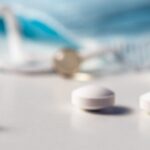Aahan Bector, Director of DecBectochem, discusses how stricter regulations and technological advancements have transformed pharmaceutical containment. The industry now emphasizes risk-based approaches, requiring sophisticated solutions to balance safety and efficiency. Innovations like single-use technologies, advanced materials, AI-driven risk assessment, and robotics are revolutionizing containment, enhancing both safety and production. Despite these advancements, challenges such as cost-effectiveness and standardization persist, highlighting the need for continued innovation.
How have regulations and technological advancements impacted the way we approach containment in pharmaceutical manufacturing today compared to, say, 10 years ago?
Absolutely! Having witnessed the pharmaceutical industry for over a decade, I’ve seen a fascinating shift in containment practices. Regulations have become stricter, with organizations like OSHA setting lower Occupational Exposure Limits (OELs) for potent compounds. This necessitates more advanced containment measures. Additionally, regulations now emphasize a risk-based approach, requiring manufacturers to assess drug hazards and implement containment proportionate to the risk. The philosophy of containment is moving from putting things in a “Box” to approaching the challenges with an outlook towards containing the process and its steps.
Balancing safety and efficiency can be a challenge in containment. How do you find the right balance between ensuring operator safety and maintaining efficient production in pharma manufacturing?
Finding the right balance is key. Selecting the most appropriate containment level (Biological Safety Cabinets, Isolators and Contained Transfer systems) for the specific drug and its potency is crucial. Over-engineering containment can hinder efficiency. Additionally, process optimization within the containment system minimizes operator intervention and production downtime. Finally, implementing comfortable and user-friendly containment systems reduces operator fatigue and potential errors. Reduction in the processes that require operator intervention to minimize the exposure points is the way forward.
What are some exciting new trends or technologies in the world of pharmaceutical containment? How do you see these advancements impacting the industry in the future?
The future of pharmaceutical containment is exciting! Single-use technologies like disposable isolator liners and transfer systems are gaining traction. These minimize cleaning requirements and downtime, potentially leading to faster production cycles. Advanced material science is also evolving, with novel materials boasting enhanced barrier properties and even self-decontamination capabilities. This could revolutionize containment practices. Finally, Artificial Intelligence (AI) has the potential to play a significant role. Utilizing AI for real-time risk assessment and predictive maintenance of containment systems can further improve safety and efficiency.
But the most exciting advancements lie in scaling production within containment. The rise of robotics in isolators will be a game-changer. Operators will be able to work at a safe distance from potent compounds while maintaining the dexterity needed for intricate tasks. Furthermore, online cleanable systems will usher in a busy bee era of maintenance. Imagine continuously cleaning containment units without interrupting production, maximizing both efficiency and safety.
Finally, closed-loop processes will allow for larger volume handling without ever exiting containment, minimizing contamination risks and streamlining production. This confluence of technologies promises a future of pharmaceutical containment that is not only safer and more efficient but also capable of producing critical drugs at a much larger scale.
Can you share an example of a challenging containment issue that can be encountered in the pharma industry? What could be the steps to finding a successful solution?
Sure, let’s talk about a challenging scenario. Think about implementing a containment strategy for a highly potent oncology drug with a complex manufacturing process involving multiple processes and transfers. This presents a unique challenge.
My approach would involve a three-pronged strategy:
- Risk Assessment: A thorough evaluation would identify critical exposure points during the process.
- Containment Selection: Given the complexity, a combination of isolators for high-risk steps and closed active transfer systems for lower-risk activities might be optimal.
- Process Optimization: Material transfer techniques would be optimized to minimize exposure within isolators, and automated cleaning systems would be incorporated. Closed loop handling of powders and processes as far as possible even within an Isolator. The Isolator would be used as the last form of defense wherever possible.
What are the biggest challenges you foresee in the future of pharmaceutical containment? Are there specific areas where further innovation is crucial?
Despite the progress, challenges remain. Balancing cost-effectiveness is crucial, as advanced containment can be expensive. Additionally, a lack of standardized practices across the industry can lead to confusion and inconsistencies. Finally, as continuous manufacturing gains traction, containment strategies need to adapt to this faster-paced environment. Further innovation is crucial in areas like:
- Developing more affordable and efficient advanced containment technologies.
- Establishing standardized practices for containment across the industry.
- Designing containment solutions specifically for continuous manufacturing processes.
What advice would you give to those just starting out in the field of pharmaceutical containment technology?
If you’re just starting out, here are some key tips:
- Develop a strong foundation: Understand the scientific and practical principles behind containment, including airflow patterns, pressure differentials, and risk assessment methodologies.
- Stay updated: The field is constantly evolving. Attend industry conferences and workshops to stay abreast of the latest technologies and regulations.
- Gain practical experience: Seek opportunities for internships or entry-level positions in containment engineering firms or pharmaceutical companies.






